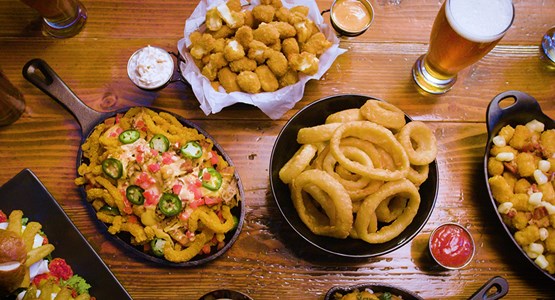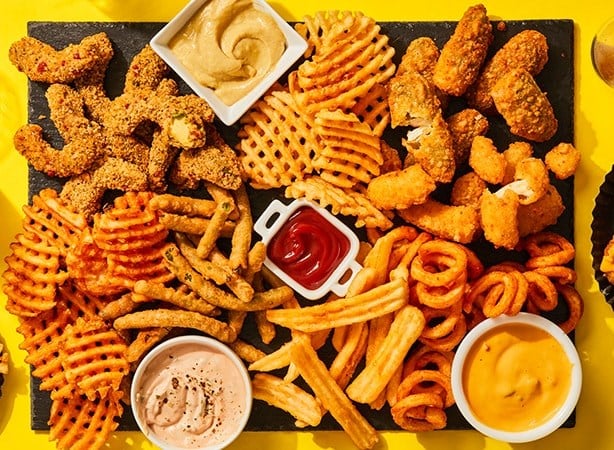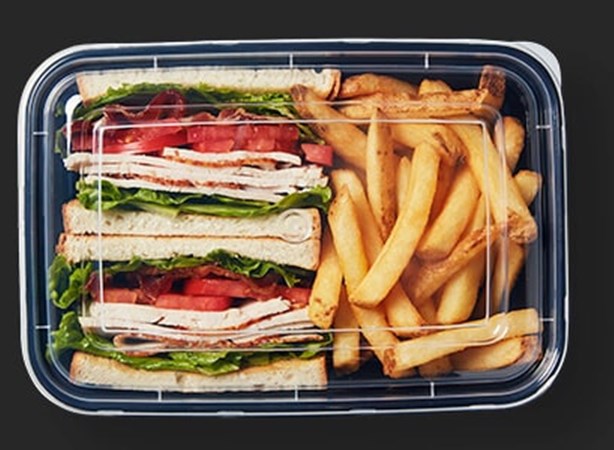
Customers Seek Rewarding, Affordable Meal Solutions That Meet Their Diverse Demands
Restaurants were forced to devise creative solutions to drive sales and profitability through their off-premise offerings in 2020, and many of those lessons are carrying over into 2021.
Large meals that feed families for days have proven popular as consumers tire of cooking at home and seek economical solutions. Meals that allow some customization, such as do-it-yourself taco kits and fried appetizers with assorted dipping sauces, have also found favor with customers.

“Traditional takeout foods like pizza, burgers and Chinese obviously saw a huge uptick early on,”
Dina Paz, culinary director at Sterling-Rice Group, says foods that travel well will continue to be paramount for operators in 2021, but consumers are also seeking more variety in the year ahead.
“Traditional takeout foods like pizza, burgers and Chinese obviously saw a huge uptick early on,” she says. “With consumers looking for variety, we have seen an increase in concepts that focus on sandwiches, handhelds, tacos/burritos, wings and more.”
Comfort-food items that can be reheated for a group, such as fried chicken, lasagna and other pasta dishes, also hold promise for innovation in the year ahead, Paz says.
More Creativity
“In the new year, we expect to see even more creative concepts that have very focused menus, yet are inventive,” she says, citing as examples boba tea and other snack-and-beverage concepts, and all-day breakfast.
In addition, she expects to see more creativity featuring familiar items that allow consumers to indulge in some flavor experimentation. These could include new, unique pizza offerings, globally inspired dishes and other fare that consumers cannot easily make at home and offer a “a big flavor twist.”
Paz says restaurants should seek opportunities to feature what she calls “supporting actors in lead roles.” Sauces, condiments and emerging global seasonings are “quick, turnkey ways for operators to jazz up their concepts without blowing up their SKU portfolio,” she says.

“Customers love the build-your-own customization of mixing and matching or pairing new flavors with their favorite menu item—for example, same chicken wing, different sauce.”
Given operators’ renewed focus on streamlined supply chains and affordable ingredients, these solutions help create excitement and interest without complicating operations, Paz explains.
“Not only are these sidekicks an easy entry to new, innovative flavor exploration. But they also do heavy lifting for concepts focused on one or two signature items, like a slew of sauces for wings, or condiments meant to reflect a different global flavor experience on sandwiches, burgers, bowls and easily transportable builds,” she says. “Customers love the build-your-own customization of mixing and matching or pairing new flavors with their favorite menu item—for example, same chicken wing, different sauce.”
Family-Friendly Promotions
Many restaurants have found that offering meal kits and family bundles can appeal to homebound families with kids.
“From date night pasta kits to DIY taco nights, customers are excited about taking the restaurant experience home, and restaurants have gotten super creative with how they do this,” says Sanjay Kotte, head of strategic partnerships at third-party delivery firm DoorDash. “We have also noticed that restaurants of all kinds have leaned into the family occasion with expanded kids’ menu offerings.”
He cites Shari’s Pies and Cafe, which offers its “kids eat free” promo on Tuesday for customers who order adult meals for delivery through DoorDash.

“From date night pasta kits to DIY taco nights, customers are excited about taking the restaurant experience home, and restaurants have gotten super creative with how they do this,”
“For example, we’ve seen health-food concepts offering grocery boxes with an assortment of locally sourced fresh fruits and vegetables available for delivery and pickup,” he says. “Many other merchants began offering pantry items like flour and oil and even toilet paper to their consumers.”
Another strategy restaurants are embracing is the expansion of their offerings into packaged pantry foods to meet the grocery-shopping needs of their customers, Kotte notes.
Understanding Your Customers
Monica Challingsworth Lyons, partner and head of global relationships at Synergy Restaurant Consultants, says restaurants must understand the needs of their local customer base as they plan their off-premise menus and strategies for 2021. For example, if the restaurant serves a large population of older consumers, these people might be more reluctant to venture out to restaurants and therefore benefit from delivery and takeout, but at the same time might be uncomfortable with digital-ordering technologies.
“I don’t think it’s a one-size-fits-all,” she says of ideal strategies for driving off-premise sales. “I think it’s really understanding who your brand is and what your customers’ needs are.”
Challingsworth Lyons says operators need to think about the overall experience they are providing for their customers, as well as the value they are offering in terms of the cost for their guests. Delivery of larger order sizes, for instance, offers customers opportunities to save money compared with multiple deliveries of smaller orders.

Given that consumers pay for the service on top of the menu price, operators should consider focusing the menu on items that both can deliver value to consumers and still make some profit for the restaurant.
Operators also should take the time to analyze the costs of the items they are offering for off-premise consumption, particularly through third-party delivery firms. Given that consumers pay for the service on top of the menu price, operators should consider focusing the menu on items that both can deliver value to consumers and still make some profit for the restaurant.
In terms of the experience, operators should consider including personal touches with their off-premise orders, such as hand-written thank-you notes, as one pizza restaurant that Challingsworth Lyons orders from does.
“It’s just a nice way to feel connected to them,” she says. “Even though we can’t dine with them, it feels like they are coming into my home.”


